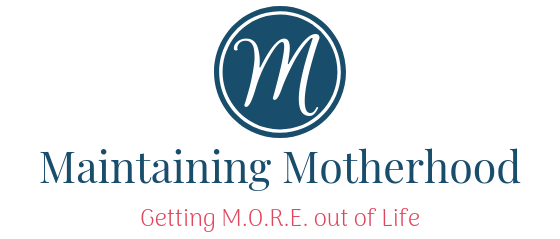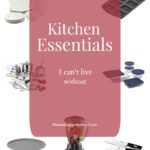With so many options, how do you choose a homeschool curriculum? Here’s a step by step guide to choosing the best homeschool curriculum!
I’m not sure what your current homeschool situation looks like. Maybe you are a seasoned homeschool mom just looking for new ideas to mix things up this school year. Or maybe you are a newer homeschool mom on the search for new curriculum ideas. You might have a child entering a new grade and are not sure what to use for that upcoming grade. Maybe last year’s curriculum choices just didn’t jive with you. Or perhaps you are one of the many brand new homeschool moms that are jumping into this feet first, never having thought in your wildest dreams that you would be homeschooling! With all of these different scenarios, it can seem impossible choosing a homeschool curriculum specific to your situation!
Homeschooling had always been a dream of mine, and we finally got to start our own homeschool journey a few years back! I feel like with all the research, interviews, time, thought, and prayer that I have put into this that I should share what I have learned along the way with all of you! Homeschool has been one of the best decisions that we have ever made for our family! I’m hoping that something I share here will help you more easily choose a curriculum that fits your family life and teaching style to help you have an amazing homeschool year!
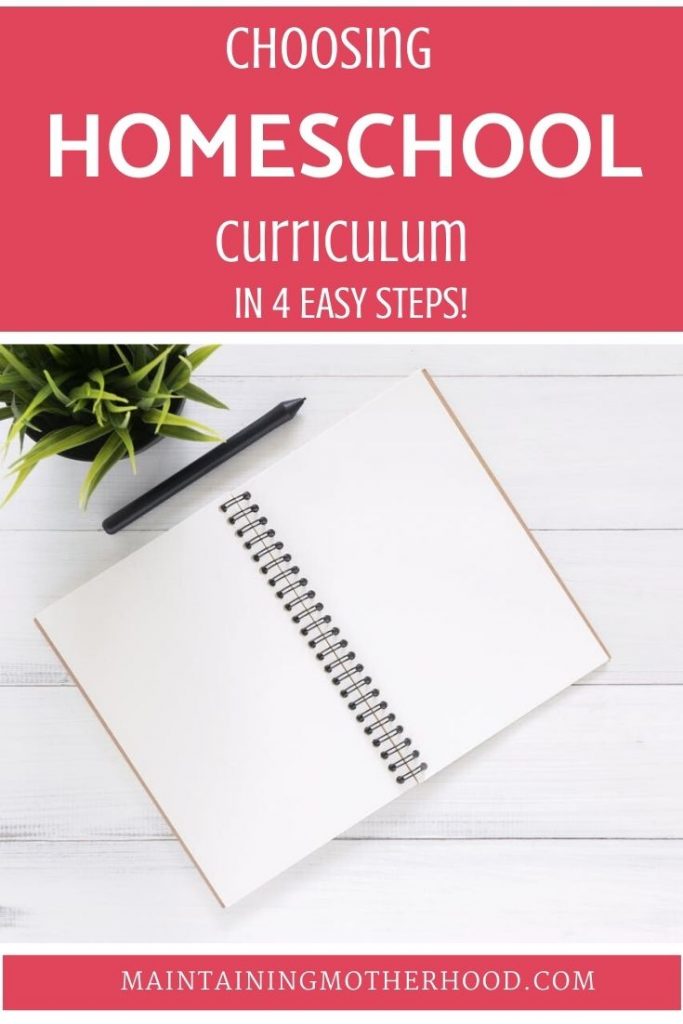
Choose Your Focus
The first step in choosing your homeschool curriculum is deciding what you want your focus to be.
There are so many different “methods” that you could choose as your focus. I will not go into all the details here, but you could research various methods such as Charlotte Mason, Thomas Jefferson Education, Montessori, unschooling, world schooling, eclectic homeschool, etc. There are so many resources out there to explain these different methods. Some homeschool curriculum packages follow these methods so you could choose a method and stick with it from k-12.
Your homeschool could be more child-led. Your child could do choose to learn about what they are interested in, and you could follow the helping provide the resources to foster the learning around those interests. A project-based education fits right into this model with having children research the topic in depth and incorporating the different learning subjects into whatever you are choosing to focus your learning on at the time.
There is also a skill-based education. If you want your child’s homeschool experience to revolve around a talent or skill that they have, you could focus everything around building that talent. Maybe you can tell they will excel in a certain subject and build a career around that. If scholarships are something that you want to focus on in their early school years whether it be in sports, music, science, technology, whatever, you could choose to base your homeschool around those subjects.
Do Your Research
Some of the best research that I before choosing our homeschool curriculum was interviewing other homeschool moms to find out what they used and how it worked for their family. I tried to ask people that had kids the same ages as my kids, and in grades a little bit higher so that I could find a curriculum that I could stay with long term instead of having to reinvent our homeschool situation every few years. With having our oldest in 5th grade when we started and 5 more littles behind, I wanted to be able to reuse curriculum as much as possible!
There are so many online resources that you can check out as well. See if there are Homeschool Facebook Groups or co-ops in your area where you can ask your questions. I have watched countless YouTube videos and searched on Pinterest for ideas. One of my favorite online resources to check out curriculum reviews is Cathy Duffy Reviews. This website has very in depth reviews on pretty much every curriculum out there. The strengths and weaknesses of each curriculum is addressed as well as the type of homeschooler that the curriculum would best suit. Homeschool On is a great YouTube channel that gives flip throughs and comparisons of curriculums based on subject.
I also love to visit the website of the curriculum that I am looking into and do a flip through, or borrow a physical copy from someone to see what it actually looks like. For me, the curriculum has to be something that is both easy to use and visually stimulating. Sturdiness, and reusability are huge perks for us too!
Remember that what works well for one family doesn’t necessarily mean that it will work great for your family. Your situation is unique to you.
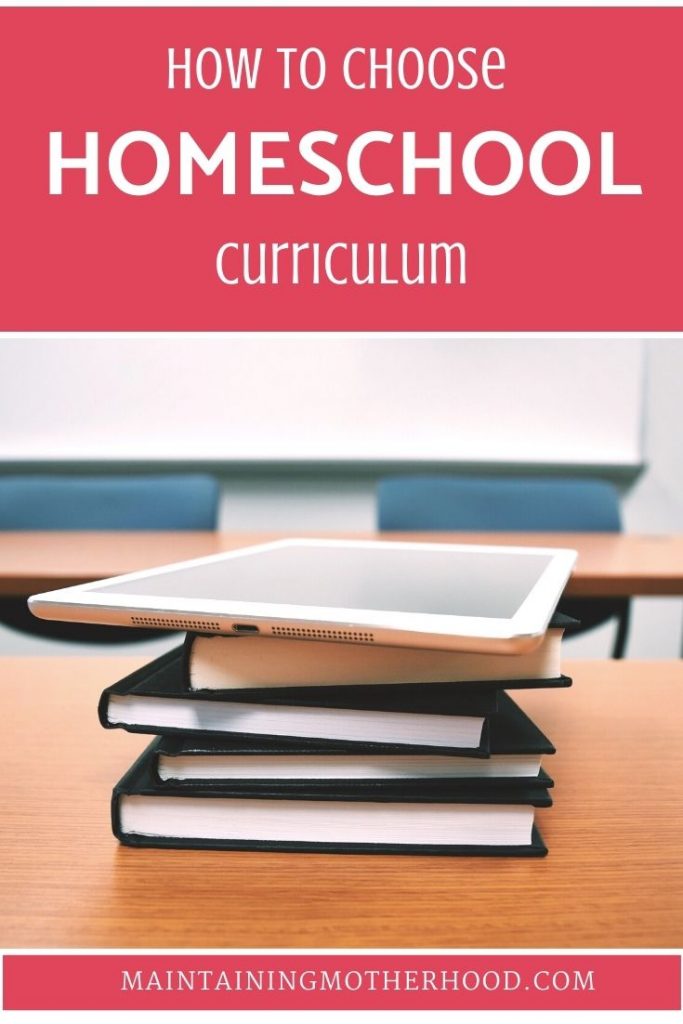
What Subjects Will You Cover
If you are overwhelmed with the vastness of the homeschool curriculum world, start simple! The most important subjects to cover (in my opinion) are Language Arts and Math. I figure if you can teach a child to read well, they can learn anything! Math is a skill that you will use all your life and the basics are all covered in the elementary levels of school. There is no need to make your homeschool so complicated that you and your children are frustrated and not enjoying the experience! Doing a simple Language Arts lesson that teaches the basics of reading and writing, and a simple math lesson or game should just about cover a day’s work. Top it off with a read aloud and maybe an art project or craft, and I’d say that has rounded out to a perfect day.
As you get more into your groove and you see what you and your children can handle, you can branch out into more of the core subjects such as History and Science. Again, you can totally ease into these subjects. Watch some documentaries or Planet Earth, check out a local Natural History Museum, go on a nature walk, or visit the Zoo! These additional core subjects can be simply covered by visiting your local library and browsing the non-fiction section and seeing what your children are interested in learning about.
If you want to expand your homeschool even further, the real stuff enters in with the electives. These could be anything from typing, coding, music, cooking, sewing, sports, art, child care, astronomy, etc. If you can think of it and your child is interested in it, it is an elective worth exploring!
Our Homeschool Focus
We decided that our focus in our homeschool would be to raise life-long learners who love learning.
Reading
Everything we do in homeschool is focused on this. That brings us right back to reading. We focus heavily on reading, because I want my kids to be able to explore the world through books on their own, and not have to wait for me to read to them or constantly rely on a screen to teach them something. In my opinion, if you can teach a child to enjoy reading, and to read well, they can learn anything!
We have made a concerted effort to beef up our home library with books that include characters with high morals, and content that teaches good values. We get most of our book recommendations from The Good and The Beautiful Book List and also from The Well Educated Heart. As we have purchased books for our own home library we have noticed a shift in the behavior and vocabulary of the children. Their reading comprehension has soared, and their writing has improved immensely!
It did take awhile to make this shift. At first, these “good and beautiful books” were seen as boring because they were more wordy and lengthy. These are not the simple readers that just feed you the story. These are books that you have to picture what the author is describing to you. I noticed that the characters of these books used to seem far-fetched to my kids as well since they used different language and vocabulary than they were used to using with their friends. It was a change that definitely took some time to adjust their brains to reading these books, but the results have been so far reaching that I’m glad we made the change!
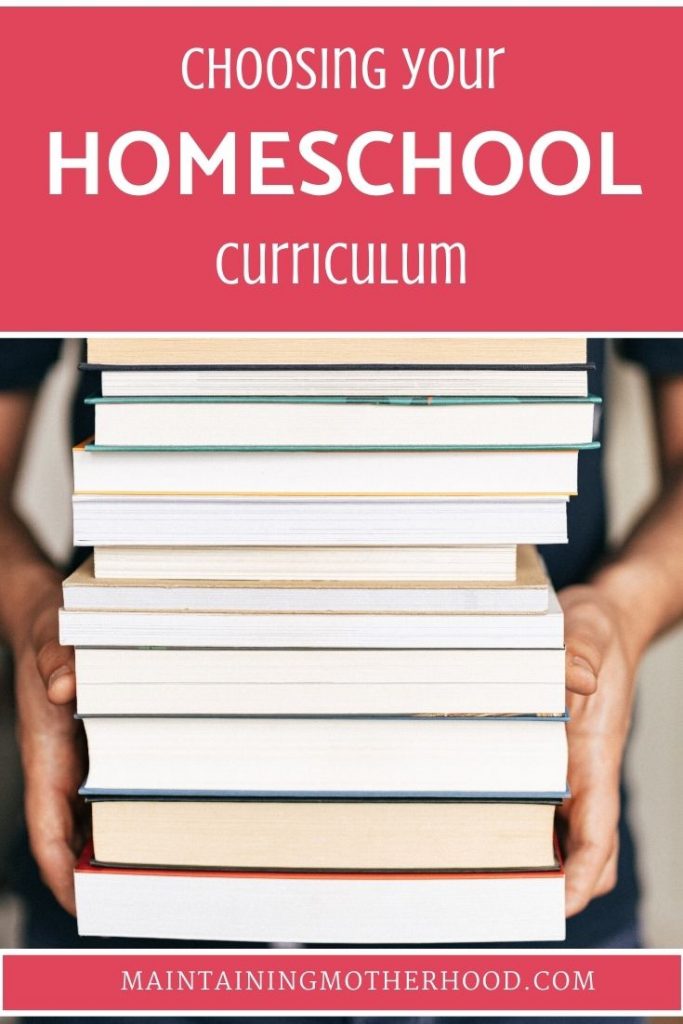
Independent Learning
In addition to a large emphasis on reading, we also focus heavily on independent learning. By the time our kids are in 4th Grade, they are mostly independent in their school work. After Grade 4, I will sit with the kids for a few minutes each day to review what they learned the day before and to give them a checklist of what needs to be covered that day in their schooling. For the most part, they are in charge of their education. This has been fun to watch and see them spend longer or go more into depth on a project that they are more interested in with an art or a writing assignment.
The skills of becoming a life-long learner are developed through teaching independent learning. The older kids are able to make a list of the things that they needed help on. This helps them to identify the areas that they are struggling in, and gives them an opportunity to vocalize the struggles instead of just saying “I don’t get it”. They also are learning to pace themselves throughout the day. When their school work from the previous day has been corrected, and their checklist for the day made, I set it aside for them to start on whenever they are ready. Some kids choose to spread their schoolwork out throughout the entire day, while others will start immediately so they can do other fun things with the rest of their day.
Keep it Simple
You don’t want your homeschool to take more time to do at home than it was taking at the public school. There is no need to stress you or your children out by filling their entire day with school work. For our homeschool, we try to be done each day by around noon. The independent learners can spread their school work out longer if they want, but after lunchtime, my teaching time is over.
When choosing specific books, I look for a curriculum that is more “open and go” so that I am not spending hours upon hours planning out our school year. We also try to do a lot of our learning “family style” meaning that I will teach the same subject to all the children at once regardless of their grade. This works really well with science, history, and our foreign language.
Try to keep your homeschool simple and enjoyable from day to day so that you and your children are excited to start school each day, rather than filled with dread. I hope that your experience with homeschool is as amazing of a journey as ours has been!
